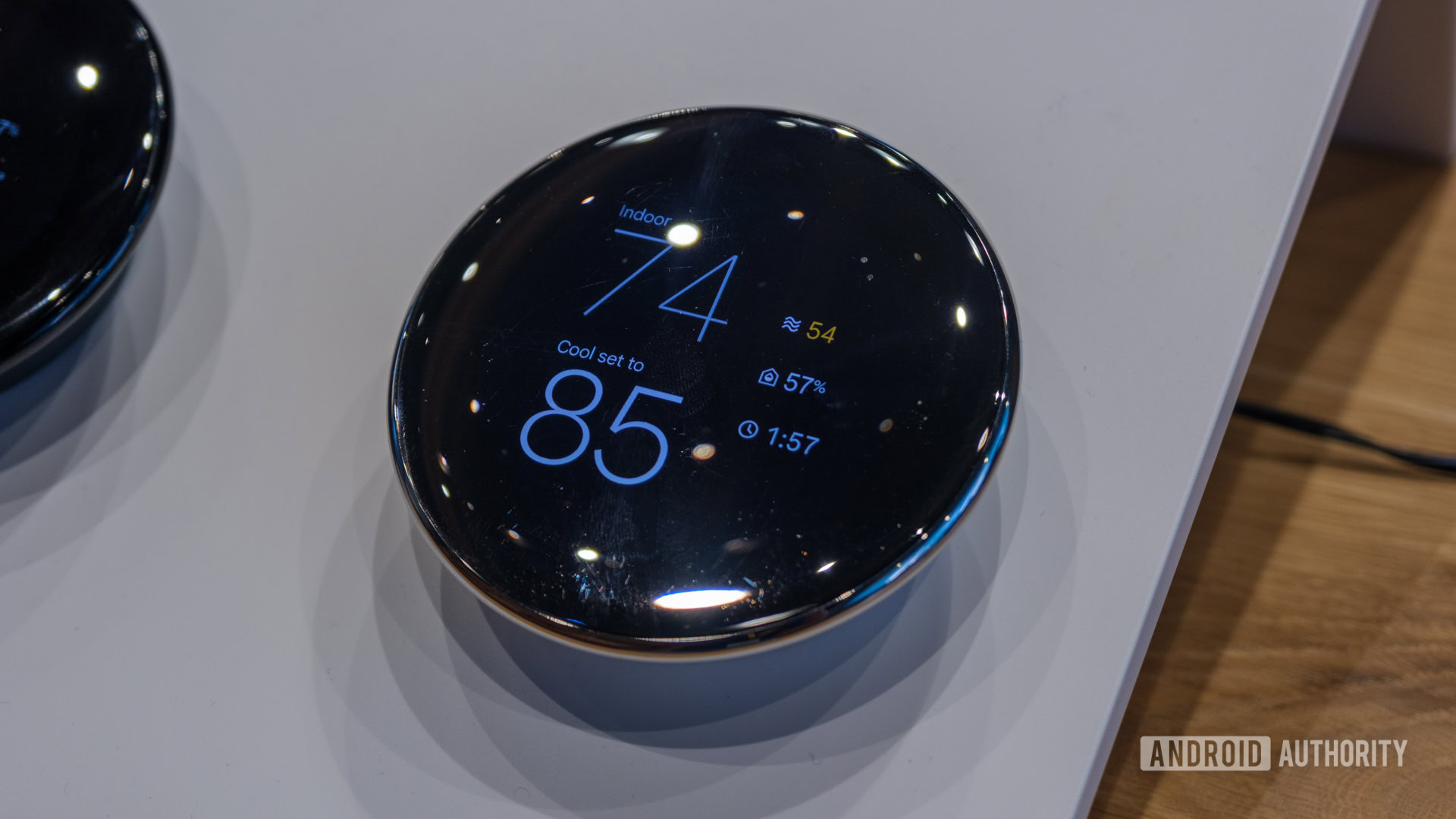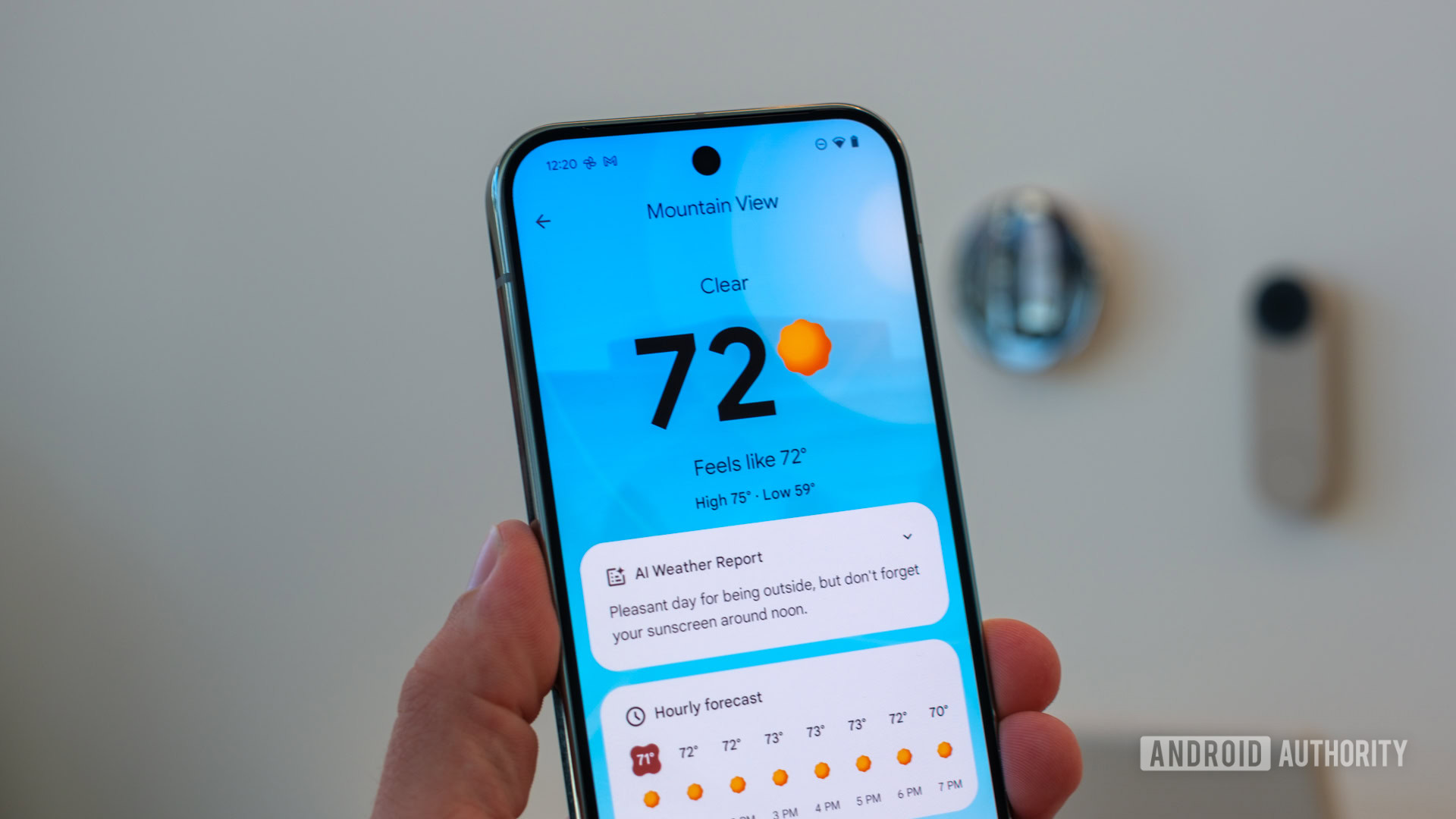Robert Triggs / Android Authority
Google’s Pixel 9 series launch focused so much on AI that it would be easy to forget that a set of flagship smartphones had also arrived. Bundled with the software announcements was a segment on the new Pixel Weather app. The redesigned tool offers a more detailed look at weather conditions compared to its frog-helmed predecessor, complete with a cleaner design. It makes for a pleasant experience, but like all weather apps, the true test is the accuracy of its information.
While some apps address this by providing multiple sources, Pixel Weather offers no such option. Instead, it relies entirely on a single source for its data. There’s nothing explicitly wrong with this, but every source has its limitations.
As it’s 2024, Google sees the benefits of using AI to simplify the weather. The Pixel Weather app includes a Gemini-powered summary feature that reduces the plethora of metrics and numbers into a brief, actionable sentence or two. A personal forecast, of sorts. However, these insights are limited by the accuracy of the data provided. An easy fix involves building on Google’s smart home foundations. It could offer a Nest-branded weather station for the home.
Weather is personal

C. Scott Brown / Android Authority
Sure, many might see a personal weather station as overkill, or a product that would be too niche for Google. Some may feel that the current data served by Google’s apps may be accurate enough for their uses. But the weather is personal and capricious. Conditions can differ vastly across a relatively short distance, let alone the span from one’s house to the provider’s nearest weather station.
This highlights Pixel Weather’s problem with limited source selections. Inaccurate data means inaccurate forecasts, and more importantly for Google, its AI weather summaries. Why would anyone bother using Pixel Weather if its forecasts are inaccurate? Utilizing local data sourced on site would mitigate this, providing consumers with the most accurate data possible.
Inaccurate data means inaccurate forecasts, and more importantly for Google, its AI weather summaries.
If you live in a city with microclimates, you’ll appreciate this particular problem. For example, let’s take Cape Town, South Africa. The city’s famous for experiencing four seasons in a day, sometimes all at once. With a mountain in the way and the primary weather station situated miles away at the international airport, there are almost always discrepancies between the city center’s conditions and the general area forecast.
In these situations, hyperlocal weather data would provide a more accurate report than any other source available. A household weather station could easily accomplish this task. I’m not saying that providers should be disregarded entirely — you’ll still need them to provide broader insights — but having layers of information reporting would only improve summary accuracy.
Why a weather station makes sense for Google and consumers

Ryan Haines / Android Authority
The benefits for consumers are obvious: more accurate data means better forecasts and immediately accessible readings. However, for Google, a smart home weather station that plugs into its ecosystem also offers an opportunity to expand its device line.
There’s currently a void in this particular area of the Google smart home lineup. A smart weather station would fit nicely into the Google Nest repertoire, too, working alongside and improving the Thermostat and other products, like Nest Audio, Google TV, and Pixel Weather. This weather information could be used by these products and apps, allowing consumers up-to-date information in real time, be it through voice requests or visual updates.
More importantly, this data would improve automation accuracy in the smart home. If the weather station detects a certain precipitation threshold, it could trigger an alert to bring in the laundry or park the car. An outside temperature peak or dip could prompt a connected Google Thermostat to increase or lower the indoor temperature or adjust eco mode.
The benefits for consumers are obvious: more accurate data means better forecasts and immediately accessible readings.
The weather station wouldn’t need to be too expensive, either. Google could opt for a modular design, allowing users to start with the basics and gradually scale up their stations with additional meters, anemometers for wind, or rain gauges for precipitation. They can buy and attach a relevant meter if they desire air quality information. There are options here.
More importantly, and in keeping with Google’s tendency to crowdsource information through its services, individual household station data could be used to provide more accurate weather forecasts across Google services in a region. Much like how users can report traffic incidents on Waze, Google could utilize the weather data gathered by stations for use on its platforms.
Importantly, a weather station wouldn’t be a replacement for third-party sources. For instance, Google would still require data from established weather sources to issue alerts, warnings, and general forecasts of an extra-local area. However, a standalone, personal station would only improve the user experience.
Would you buy a smart Google weather station?
7 votes
A Nest weather station could provide torrents of value

Ryan Haines / Android Authority
A weather station might be a tough sell. Only smart home or weather enthusiasts might be interested in such a device. However, we all experience varying weather conditions daily. There is room for innovation in this segment that dovetails with Google’s AI, smart home, and weather-related projects.
With a smart weather station, Google’s smart home offering would be more complete, improve its AI optics and overall performance, and provide broader data that could be used across services. Consumers would benefit from better weather details and forecasts. It’s a win-win.
This segment isn’t completely uncharted, though. Third-party weather stations that plug into smart homes are readily available from other manufacturers. However, having a weather station that easily syncs with an already-established Google ecosystem makes so much sense.
